1935 SS1 Airline Saloon
How many of us ever have the opportunity to drive an 87-year-old car, and not just around the block? Peter Simpson takes the Jaguar Daimler Heritage Trust’s 1935 SS1 Airline Saloon on a tour of the English Cotswolds…
WANDERNG STAR
SS1 AIRLINE ROADTRIP
AN ELEGANT SALOON TOUR OF THE ENGLISH COTSWOLDS
ON TOUR IN AN SS1 AIRLINE
Peter Simpson sneaks it out of the JDHT collection and swans around the Cotswolds
It’s hot outside. It’s even hotter inside. My aching muscles are screaming for spinach like a weary Popeye beaten into submission. I’m back in 1935 driving a vehicle that is the epitome of sleekness and modernity that surely should be as breezy to manoeuvre as the period adverts would have claimed. In this age of power steering, anti-lock brakes and computer control have we all gone soft or were cars really this demanding back in the day? Of course, we must make allowances for our ages and attendant stiffness from lack of use, although as the day wears on and we both loosen up I begin to get the measure of this beautiful machine, with the car’s upper hand becoming less domineering.
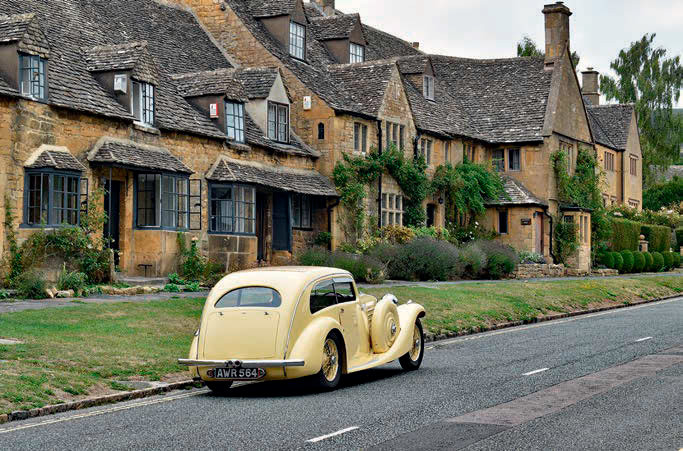
“For us it was reminiscent of a period hill-climb, not unlikely territory for the SS Airline because these cars were raced in the day.
So how was I so lucky to take this drive of a lifetime? It was my good fortune to be in the right place at the right time. The Airline had been a museum exhibit for decades but was in the process of recommissioning, to play a star role in this year’s centenary of Swallow to Jaguar following the founding of the Swallow Sidecar Company in 1922. The Jaguar Daimler Heritage Trust (JDHT) are the custodians of this history and eager to stage a world-class celebration by returning the Airline and many other venerable vehicles into roadworthy condition. As a volunteer for the JDHT and opportunely in the process of writing a touring guidebook to Britain they agreed to my employing a selection of the Trust’s cars as photographic models, both to massively enhance the content and help draw attention to the Trust’s invaluable role as the repository of Jaguar’s illustrious chronology. After much work on the Airline, the words deeming it to require ‘a good run out’ were uttered just as I happened to stick my head around the door with a transparently hopeful expression.
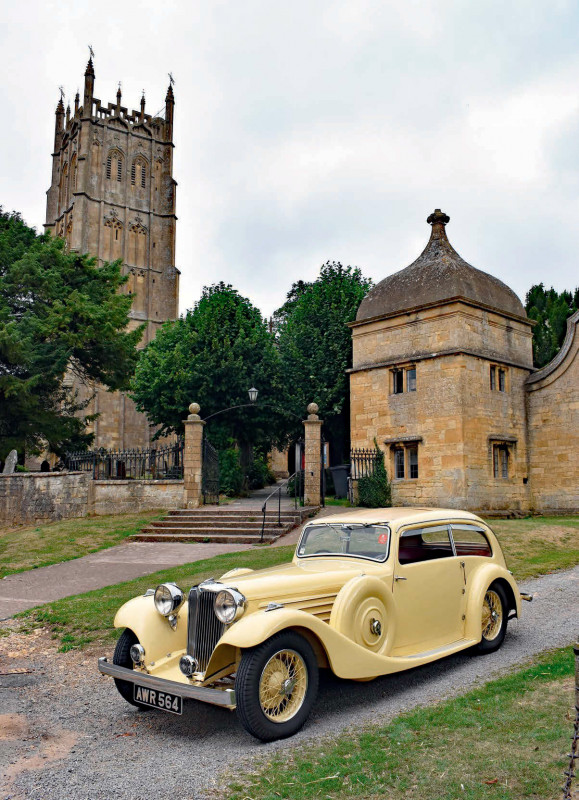
FOLLOWING FASHION
There are thought to be only around thirty SS1 Airlines left in the world and the JDHT possess two of them. I first became enthralled by this car at the Coventry Transport Museum where it spent a decade wooing the crowds. The Trust’s other Airline (a black one on long-term loan from Jaguar Classic) has replaced it there and now this cream model is usually on display in the Collections Centre at the British Motor Museum. I always think of the black saloon as a rather sinister Al Capone, whereas the cream car is definitely Greta Garbo. The styling was a fleeting fashion statement for aesthetic appeal during the later Art Deco period in what was known as the Streamline Moderne.
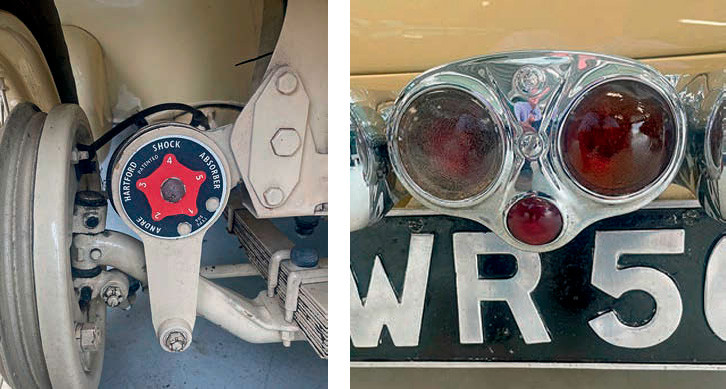
The Americans were particularly taken by this aerodynamic design vogue where curvature was king. They applied it to buildings, ships, trains and automobiles. In the UK a number of manufacturers tried their hand but the most successful was the SS1 Airline, which was in fact not strictly true to the ethos. The reason we assume is that William Lyons was not one to frivolously waste money on an entirely new design and simply took a standard SS1 body and put a ‘fastback’ on the rear end, along with a few other fanciful flourishes. To the modern eye it is captivating, although Lyons was never happy with the compromises that were made. Nonetheless, six hundred Airlines were sold over the short-lived two-year build period. This example benefitted from the later, larger engine that had received modifications from the legendary engineer Harry Weslake. The advertisements of the day promised “unparalleled performance to satisfy the most exacting sports car connoisseur”. It was time for me to find out.
ON THE ROAD
As we departed the JDHT workshop there was a minor electrical glitch, although as the car only has two fuses there is a wonderful simplicity to diagnostics, and we pointed the massive Lucas headlamps towards the Cotswolds with minimal delay. In action the car is remarkably civilised in terms of comfort, with the driver ensconced in all the appurtenances of 1930’s luxury amidst an interior tailored as though from Saville Row. The engine is smooth and the gearbox precise. Those are the positives. Now come the character attributes. The brakes are sufficient but demand dexterity as they will easily lock, requiring the ability to depress the pedal just up the point of maximum effectiveness before discolouring the tarmac. The steering is entertaining in that the car is definitely in charge of the trajectory it chooses, the pilot merely attempting to persuade it to head in the desired direction. It’s best just to let the Airline wander rather than constantly correct it, as though it were a lolloping, rambunctious hound set free of the leash. The extended diameter of the steering wheel gives a clue as to the absence of powered assistance, nevertheless, it still comes as a shock just how much exertion is necessary to negotiate corners and that effort does not diminish with speed. It is as far from the anodyne, sanitized modern driving routine that fellow motorists are experiencing and all the more rewarding for it. Every mile is an adventure.
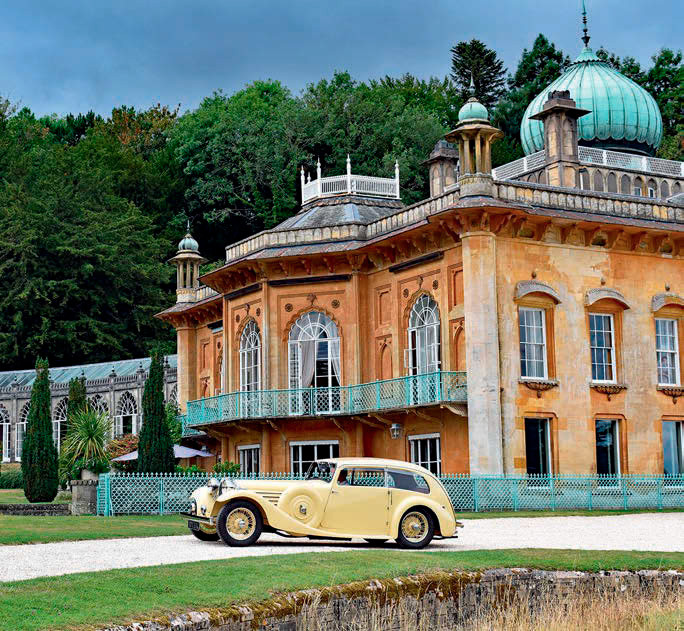
Within an hour we were in the heart of the Cotswolds with numerous photo locations to visit. The route of my tour in the forthcoming book commences at Broadway, one of the innumerable showpiece villages in a region that owes so much of its character to the stone of which it is composed. The honey-coloured limestone is perfectly complemented by the cream hue of the SS1 Airline, a fact which did not allude the crowd of admirers who steadily gathered, awestruck as the car posed for photographs. Broadway takes its name simply from the width of its main street and has become one of the most esteemed villages in England. However, the old thoroughfare became a dead-end following a bypass being built and few now follow it to its furthest point, thus providing a quiet setting for pictures. Perhaps I should apologise to the residents of the village for revealing this secret.
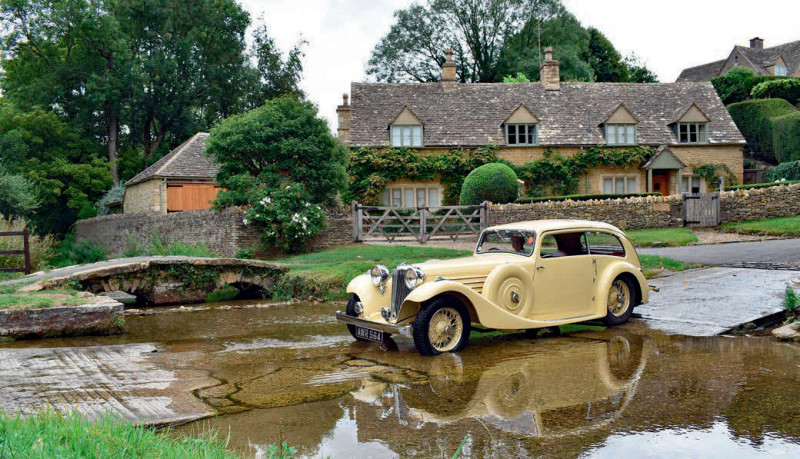
It is less easy to escape the crowds at Chipping Campden but the extraordinary antiquity of the buildings demand inclusion, even though we had to wait a considerable time for the posse of automotive worshippers to clear before snapping a view of the car by the church. Cotswold churches are a major feature of the towns, far larger than would warrant the congregational size. However, they were built with the wealth of ostentatious medieval wool merchants when the Cotswolds produced over half of the woollen cloth in England. Other celebrated settlements on our route included Bourton-on-the-Water whose charm principally derives from the River Windrush, which flows through the centre of the village. There are many tourist attractions with the most appropriate for our purposes being the delightful Motor Museum. Close by are ‘The Slaughters’, two small villages with big appeal, again for that combination of flowing water and golden stone. I had dearly hoped to take a photograph of the Airline at the ford in Upper Slaughter although the uneven riverbed and water depth were a concern. Cars that are close to ninety years old should be respected, so it was a joy to discover the wading depth negligible and the ford safe to cross. What the accompanying picture doesn’t show are the local residents, who came out from their thatched dwellings not to complain but to capture the moment on their own cameras.
Touring in an emblematic 1930’s car undeniably affords privilege and accordingly we approached Sezincote for permission to photograph the car against the backdrop of the extravagant house. We were warmly welcomed and spent a lovely afternoon in their company. Sezincote is India brought to the Cotswolds, the architecture having inspired the later construction of Brighton Pavilion. It’s a delightful place to visit and highly recommended.
Nonetheless, there is more to the Cotswolds than its buildings and a significant part our drive explored the open rolling hills (the ‘wolds’ of the name). A particular favourite stretch of road climbs steeply from the ruins of Hailes Abbey, a former Cistercian monastery, onto Salter’s Hill above Winchcombe. This route was once a hefty ascent for packhorses transporting salt (for food preservation) across to the River Thames and thence to London. For us it was reminiscent of a period hill-climb, not unlikely territory for the SS Airline because these cars were raced in the day, and one completed the Monte Carlo Rally in 1935 after setting out from John o’ Groats. Knowing that did rather diminish my own heroic age of motoring achievement of one hundred miles around the Cotswolds. By the return journey to the British Motor Museum, I was handling the car with nonchalant ease (or so I like to think) although there were hazards to contend with. In particular, we did encounter rain showers and tractors who were wilfully depositing mud from the fields in their wake. It did occur to me that the self-guiding steering system on the Airline was actually proving of value as perhaps it was programmed to meander around the debris. However, the major peril came from the JDHT’s vehicle volunteers who had to clean the car after my use. The response when I saw them later went something like this… “Thirty years pristinely on display in a museum and one day on the road with you and now look at it!”
“It is as far from the anodyne, sanitized modern driving routine that fellow motorists are experiencing...”
Hartford friction damping provides a comfortable ride. “Bugseye” Malone — the rear light cluster unwittingly continues the gangster theme
“For us it was reminiscent of a period hillclimb, not unlikely territory for the SS Airline because these cars were raced in the day...”
Sezincote: Imperial decadence in the Cotswolds or (When Tata didn’t own Jaguar!)
Salter’s Hill: thankfully the salt on this road has long gone
“Lyons was never happy with the compromises that were made. Nonetheless, six hundred Airlines were sold over the short-lived two-year build period”
Upper Slaughter: picture postcard perfection
AWR 564 was delivered new in March 1935 to a Captain S Clough by Yorkshire SS dealer Glovers of Harrogate. By 1948 the car had passed to L A Reid of Kirby near Liverpool who owned it until 1984 when it was bought by the History of Jaguar Museum in Maldon who had the car restored. In 1994 the museum closed, and the car was put up for auction to be purchased by the Jaguar Daimler Heritage Trust with the aid of a grant from the Prism Trust. Further restoration and mechanical work were undertaken by the Trust before the Airline was put on display at the Coventry Museum of Transport. To mark the present centenary celebrations the JDHT began a programme of recommissioning, which included further engine work, lighting improvements for safety and the fitting of an electric cooling fan. Airlines were always prone to overheating due to the limited pattern of bonnet louvres dictated by fashion considerations. As this feature goes to press new track rod ends have been sourced and fitted, resulting in a much-improved steering response.
Broadway: this could be 1930’s England (except for the alarm boxes!)


